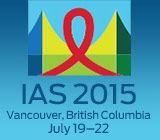 Starting HIV treatment with a higher viral load tends to increase the time it takes to suppress the virus, extending the window of time when an individual may still be infectious. Researchers conducted an analysis of the HPTN 052 study, focusing on 1,036 HIV-positive participants’ data through May 2011, and presented their findings at 8th International AIDS Society Conference on HIV Pathogenesis, Treatment and Prevention in Vancouver, British Columbia.
Starting HIV treatment with a higher viral load tends to increase the time it takes to suppress the virus, extending the window of time when an individual may still be infectious. Researchers conducted an analysis of the HPTN 052 study, focusing on 1,036 HIV-positive participants’ data through May 2011, and presented their findings at 8th International AIDS Society Conference on HIV Pathogenesis, Treatment and Prevention in Vancouver, British Columbia.
The HPTN 052 study of 1,763 mixed-HIV status heterosexual couples ran from April 2005 to May 2015. The study randomly assigned the HIV-positive participants to either start antiretrovirals (ARVs) immediately (the immediate arm), or wait until HIV disease progressed (the delayed arm). In 2011, an interim analysis found that starting ARVs reduced the risk of transmitting the virus by 96 percent. At that time, all participants were offered treatment.
A separate analysis presented at the conference found that none of the HIV-positive partners apparently transmitted the virus to their study partner.
This analysis looked at 832 participants from the early arm, who contributed 219 person-years on treatment, and 204 people from the delayed arm, who contributed 219 person-years on treatment. The study defined viral suppression as the first two consecutive viral load tests at or below 400. Treatment failure was defined as the first of two consecutive viral loads at or above 1,000, more than 24 weeks after starting treatment.
The cumulative probabilities that participants were virally suppressed one, three, six and 12 months into the study were a respective 46.4 percent, 78.5 percent, 89.4 percent and 92.9 percent. The researchers found that having a higher viral load when starting ARVs was linked with a 13 percent increase in the likelihood of taking more time to achieve viral suppression.
By May 2011, 93 members of the early arm and nine of the delayed arm experienced treatment failure. Looking at just the early arm, the researchers found that not being virally suppressed at three months was linked to a 9.34-fold increase in having a shorter time until treatment failure, should it occur. It was also associated with an 8.99-fold increase in the likelihood of experiencing treatment failure. These findings were similar for those who were not virally suppressed at six months.
Advertisement
Advertisement
Advertisement






Comments
Comments